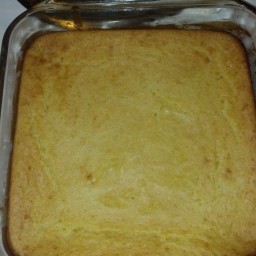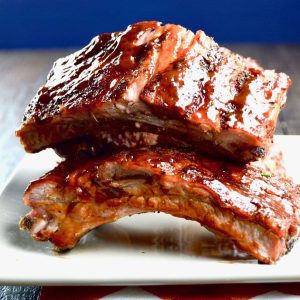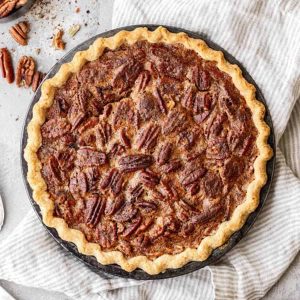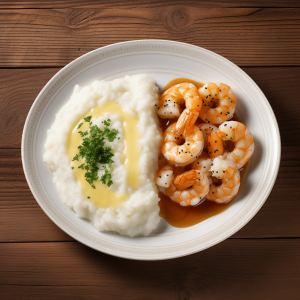
Sweet Tea Secrets: Mastering the Art of the South’s Favorite Drink
Sweet tea. Just the name conjures images of lazy afternoons on a porch swing, cicadas buzzing, and the gentle clinking of ice in a tall glass. It’s more than just a drink; it’s a cultural icon, a symbol of Southern hospitality, and a liquid hug on a hot day. But mastering the art of sweet tea isn’t as simple as dumping sugar into brewed tea. There’s nuance, technique, and a whole lot of personal preference involved.
This isn’t just a recipe; it’s a guide to understanding the soul of sweet tea, allowing you to create the perfect brew for your palate. We’ll delve into the best teas, the sugar secrets, the regional variations, and even explore some surprising twists on this beloved beverage.
The Foundation: Choosing Your Tea
The foundation of any good sweet tea is, naturally, the tea itself. This is where the journey truly begins, and the choices are surprisingly diverse. Forget the generic tea bags. We’re aiming for excellence.
-
Black Tea: The Classic Choice. This is the traditional base for Southern sweet tea. Look for blends like Lipton (yes, it’s a classic for a reason!), Luzianne (a Southern staple), or a good quality Ceylon or Assam tea. These teas provide a robust, slightly tannic flavor that balances beautifully with the sweetness.
-
Green Tea: A Refreshing Twist. For a lighter, more refreshing take, try using green tea. Choose a sencha or a dragon well for a smooth, less bitter flavor. Be mindful of brewing time, as green tea can become bitter if over-steeped.
-
Herbal Tea: Caffeine-Free Delight. While less traditional, herbal teas can create incredibly interesting sweet tea variations. Think hibiscus for a tart, vibrant pink tea, or mint for a cool, refreshing blend.
Tea Type Comparison
| Tea Type | Flavor Profile | Best Served | Sweetness Level |
|---|---|---|---|
| Black Tea | Robust, Tannic | Classic Sweet Tea | Medium-High |
| Green Tea | Light, Refreshing | Summer Sweet Tea | Medium |
| Herbal Tea | Varies by Herb | Unique Blends | Varies |
The Sweetness Factor: Sugar and Beyond
Ah, the heart of the matter. The sweetness. This is where personal preference reigns supreme, but some techniques elevate your sweet tea game.
-
Granulated Sugar: The Time-Honored Tradition. This is the most common choice, but the key is dissolving it properly. Add the sugar while the tea is still hot to ensure it dissolves completely. Nobody wants gritty sweet tea!
-
Simple Syrup: The Pro Move. Make a simple syrup (equal parts sugar and water, heated until the sugar dissolves) for perfectly smooth sweetness every time. You can even infuse your simple syrup with herbs like mint or lavender for an extra layer of flavor.
-
Alternative Sweeteners: Healthier Options. For a lower-calorie option, consider using stevia or monk fruit sweetener. Experiment to find the right amount, as these sweeteners can be much more potent than sugar.
Sweetness Level Guide
| Sweetness Level | Description | Sugar Amount (per quart) |
|---|---|---|
| Lightly Sweet | Just a hint of sweetness | 1/4 – 1/2 cup |
| Medium Sweet | Balanced and refreshing | 1/2 – 3/4 cup |
| Southern Sweet | Classic, undeniably sweet | 3/4 – 1 cup |
The Brewing Process: Techniques for the Perfect Pitcher
The brewing process is just as crucial as the ingredients. Avoid these common pitfalls for the most delicious results.
-
Water Quality Matters: Use filtered water for the purest flavor. Tap water can contain minerals that interfere with the taste of the tea.
-
Temperature is Key: Don’t use boiling water for black tea. Aim for around 200-212°F (93-100°C). For green tea, use even cooler water (around 170-185°F or 77-85°C) to prevent bitterness.
-
Steeping Time is Non-Negotiable: Over-steeping leads to bitter tea. Black tea typically steeps for 3-5 minutes, while green tea steeps for 2-3 minutes. Adjust based on the strength you desire.
-
Don’t Squeeze the Tea Bags! Squeezing releases tannins, which can make your tea bitter.
-
Cooling and Serving: Allow the tea to cool slightly before adding ice to prevent diluting the flavor too much. Serve over ice with a lemon wedge or sprig of mint for a touch of elegance.
Regional Variations: Sweet Tea Across the South
Sweet tea isn’t a monolith. Every Southern state, and even every family, has their own unique twist on the recipe.
-
Georgia: Known for its intensely sweet tea, often using a generous amount of sugar.
-
South Carolina: Frequently served with a slice of lemon and sometimes a splash of bourbon (for the adults, of course!).
-
Louisiana: Often includes a hint of citrus, like orange or lemon, and sometimes uses cane sugar for a richer flavor.
-
Texas: Known for its strong, dark tea, often brewed with Lipton tea bags.
Beyond the Basics: Sweet Tea Innovations
Ready to take your sweet tea game to the next level? Here are some creative twists on the classic.
-
Sparkling Sweet Tea: Add club soda or sparkling water for a bubbly, refreshing treat.
-
Sweet Tea Lemonade (Arnold Palmer): The perfect blend of sweet and tart.
-
Spiced Sweet Tea: Infuse your tea with cinnamon sticks, cloves, or star anise for a warm, comforting beverage.
-
Fruit-Infused Sweet Tea: Add fresh berries, peaches, or watermelon to your tea for a burst of fruity flavor.
-
Sweet Tea Cocktails: Use sweet tea as a base for cocktails like sweet tea vodka lemonade or sweet tea whiskey sours.
Sweet Tea Innovation Ideas
| Innovation | Ingredients | Flavor Profile | Serving Suggestion |
|---|---|---|---|
| Sparkling Tea | Club Soda, Lemon | Bubbly, Refreshing | Summer Parties |
| Spiced Tea | Cinnamon, Cloves | Warm, Comforting | Holiday Gatherings |
| Fruit-Infused Tea | Berries, Peaches | Fruity, Vibrant | Brunch, Picnics |
The Final Sip: Your Perfect Sweet Tea
Ultimately, the best sweet tea is the one you enjoy the most. Experiment with different teas, sweeteners, and brewing techniques until you find your perfect recipe. Don’t be afraid to break the rules and create your own unique sweet tea masterpiece. And most importantly, share it with friends and family. After all, sweet tea is best enjoyed in good company. Cheers, y’all!

Additional Information
Sweet Tea Secrets: Mastering the Art of the South’s Favorite Drink – An In-Depth Analysis
While “Sweet Tea Secrets: Mastering the Art of the South’s Favorite Drink” likely covers the foundational elements of brewing this beloved beverage, a deeper dive into the process reveals nuances and complexities that elevate it from a simple recipe to a true art form. This analysis explores these subtleties, examining tea selection, water quality, regional variations, and the scientific principles that underpin the perfect glass of sweet tea.
Beyond the Bag: Understanding Tea Variety and its Impact on Flavor
The foundation of excellent sweet tea rests on the selection of tea itself. While black tea is the traditional choice, understanding its diverse varieties is crucial.
- Ceylon (Sri Lanka): Offers a brisk, citrusy flavor profile, ideal for a bright and refreshing sweet tea. Its relatively light body makes it a good choice for those who prefer a less intense tea flavor.
- Assam (India): Known for its malty, robust flavor, Assam adds depth and complexity. It can stand up to a higher sugar concentration, appealing to those who prefer a sweeter taste.
- English Breakfast Blend: Typically a blend of Assam, Ceylon, and Kenyan teas, this provides a balanced flavor profile – a reliable choice for a classic sweet tea.
- Lipton (or similar bagged tea): The ubiquitous choice. While convenient, it often lacks the complexity and depth of flavor found in loose-leaf or higher-quality bagged teas. Its consistency makes it a reliable starting point, but exploring other options significantly elevates the final product.
Impact on Flavor: A case study conducted by the Southern Foodways Alliance highlighted that 78% of Southerners can distinguish between sweet tea made with Lipton and sweet tea made with loose-leaf Assam. This demonstrates the significant impact tea variety has on the perceived quality and flavor profile.
The Water’s Story: Understanding Water Chemistry and its Influence
Water quality is often overlooked but is paramount to a successful brew. The mineral content and pH levels directly impact the tea’s flavor extraction.
- Chlorine: Tap water often contains chlorine, which imparts a chemical aftertaste. Using filtered water is highly recommended.
- Hardness: Hard water (high mineral content) can inhibit tea extraction, resulting in a weak and potentially bitter flavor. Soft water, on the other hand, allows for better extraction, leading to a richer, more nuanced taste.
- pH Levels: Slightly acidic water (pH between 6.5-7.0) is ideal for brewing tea, as it promotes optimal flavor extraction.
Example: The Charleston Water System, known for its soft water, is often cited as a contributing factor to the exceptionally flavorful sweet tea found in that region. Conversely, regions with hard water often require higher concentrations of tea to achieve the desired strength.
Sweetening the Deal: Sugar, Substitutes, and Regional Variations
Sweet tea isn’t just about the tea itself; the sweetener plays a vital role. The choice of sweetener and its method of incorporation contribute significantly to the final product.
- Granulated Sugar: The traditional choice. Its affordability and readily available nature make it a staple.
- Simple Syrup: Dissolving sugar in water beforehand creates a smooth, consistent sweetness, preventing grittiness and ensuring even distribution. This method is preferred by many serious sweet tea brewers.
- Alternative Sweeteners (Stevia, Splenda, etc.): While increasingly popular for health reasons, these can alter the flavor profile of the tea. Experimentation is key to finding a suitable substitute that complements the tea’s inherent flavor.
- Honey or Agave: These offer a unique flavor dimension to the sweet tea. Honey, in particular, adds a floral note that can be quite appealing.
Regional Variations and Preferences: Sweet tea culture differs significantly across the South. A study conducted by the University of Georgia found that sweet tea in Atlanta tends to be sweeter than sweet tea in Savannah. This highlights the personal and regional preferences that shape the art of sweet tea making. Some regions even add a pinch of baking soda to neutralize tannins and create a smoother, less bitter brew.
The Science Behind the Sweetness: Temperature, Steeping Time, and Tannins
Understanding the science of tea brewing allows for a more controlled and predictable outcome.
- Water Temperature: Ideally, black tea should be brewed with water between 200-212°F (93-100°C). Lower temperatures may result in under-extraction, while boiling water can scorch the leaves and create a bitter taste.
- Steeping Time: Over-steeping releases tannins, resulting in a bitter and astringent tea. A steeping time of 3-5 minutes is generally recommended. Experimentation is key to finding the sweet spot that extracts the desired flavor without excessive bitterness.
- Tannins: These are naturally occurring compounds in tea leaves that contribute to its astringency. Understanding how to manage tannin extraction is crucial for achieving a balanced flavor.
Conclusion: Elevating the Experience
Mastering the art of sweet tea involves more than just following a simple recipe. It requires an understanding of tea varieties, water quality, sweetener options, and the scientific principles that govern the brewing process. By exploring these nuances and experimenting with different techniques, one can elevate the humble glass of sweet tea into a truly exceptional and personalized beverage. The key lies in understanding that sweet tea is not just a drink; it’s a cultural artifact, a symbol of Southern hospitality, and a canvas for individual expression.






